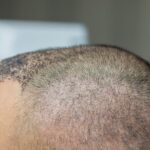Understanding Hair Transplants
Hair transplants have become one of the most effective solutions for those experiencing hair loss. Two of the most commonly used techniques are FUT Hair Transplant in Abu Dhabi and Follicular Unit Extraction (FUE). Both methods offer promising results, but choosing the right one depends on individual needs, expectations, and hair restoration goals.
What is FUT Hair Transplant?
FUT, also known as the strip method, involves removing a strip of skin from the donor area, typically at the back of the scalp. This strip is then dissected into smaller grafts, which are implanted into the areas affected by hair loss. This technique allows for a higher number of grafts to be transplanted in a single session, making it suitable for individuals with significant hair thinning.
What is FUE Hair Transplant?
FUE is a more advanced technique that involves extracting individual hair follicles directly from the donor area without the need for a strip of skin. These follicles are then implanted into the areas where hair restoration is needed. This method leaves minimal scarring, making it an appealing option for those who prefer to wear short hairstyles.
Which Hair Transplant Method Offers Natural-Looking Results?
Both FUT and FUE provide natural-looking results when performed by experienced specialists. FUT allows for the transplantation of a larger number of grafts in a single session, leading to fuller coverage, while FUE offers a more precise and refined appearance due to the individual extraction process. The choice depends on factors such as hair density, the size of the area requiring restoration, and personal preference.
Which Technique is Less Invasive?
FUE is generally considered less invasive since it does not require a strip of skin to be removed. The extraction of individual follicles results in smaller, dot-like scars that are barely noticeable. FUT, on the other hand, involves sutures, which may take longer to heal. Those who prefer a less invasive approach often lean towards FUE.
How Long is the Recovery Process?
The recovery time for both procedures varies. FUE has a shorter recovery period due to its minimally invasive nature, allowing individuals to return to their regular activities sooner. FUT may require a longer healing period as the donor area undergoes suturing, which takes additional time to heal. Proper aftercare ensures optimal recovery for both techniques.
Can Either Technique Be Used for Advanced Hair Loss?
FUT is often recommended for those with advanced hair loss because it allows for a larger number of grafts to be transplanted in a single session. FUE is ideal for individuals with mild to moderate hair thinning who prefer a less invasive approach. Consulting with a specialist helps determine which technique is more suitable based on the level of hair loss.
Which Technique Leaves Less Visible Scarring?
Scarring is an important consideration when choosing between FUT and FUE. FUT leaves a linear scar in the donor area, which can be concealed by longer hairstyles. FUE, in contrast, leaves tiny, scattered scars that are barely noticeable, making it a preferred choice for those who like to keep their hair short.
Can the Transplanted Hair Grow Naturally?
The transplanted hair from both FUT and FUE follows the natural growth cycle. Once the initial shedding phase is over, new hair begins to grow, providing long-lasting results. The newly transplanted hair can be cut, styled, and maintained just like natural hair.
How to Determine Which Technique is Best?
The decision between FUT and FUE depends on various factors such as the severity of hair loss, the desired hairline design, recovery preferences, and personal goals. Consulting with a specialist can help determine the most suitable approach for achieving optimal hair restoration results.
Does Hair Type Affect the Choice of Technique?
Hair type plays a role in selecting the right transplant method. Those with thick, curly, or wavy hair may benefit from either FUT or FUE, but individual follicle extraction in FUE may be more challenging for certain hair textures. An evaluation of hair characteristics ensures the best outcome for each individual.
How Long Does It Take to See Results?
Hair transplant results take time to become fully visible. In the initial months, the transplanted hair sheds before new growth begins. Full results typically appear within six to twelve months, with gradual improvement over time. Patience and proper care contribute to successful outcomes.
Which Method is More Suitable for High-Density Hair Restoration?
For individuals seeking a high-density restoration, FUT is often the preferred option as it allows for a larger number of grafts to be transplanted in a single session. FUE is ideal for smaller areas or those who prefer a gradual restoration process. The choice depends on the extent of hair loss and aesthetic goals.
Can Both Techniques Be Combined?
In some cases, FUT and FUE can be combined to maximize hair restoration results. This approach is useful for those who need a significant number of grafts while maintaining a minimally invasive procedure for certain areas. Combining techniques can provide a more comprehensive and natural-looking outcome.
What Should Be Expected After a Hair Transplant?
After a hair transplant, the scalp undergoes a healing process. Some redness, mild discomfort, and temporary scabbing may occur, which subsides over time. Following aftercare guidelines ensures a smooth recovery and enhances the final results.
Final Thoughts
Choosing between FUT and FUE hair transplant techniques in Abu Dhabi requires careful consideration of individual needs and expectations. Both methods offer effective hair restoration solutions, and consulting with a professional can help determine the best option for achieving natural-looking and long-lasting results.

